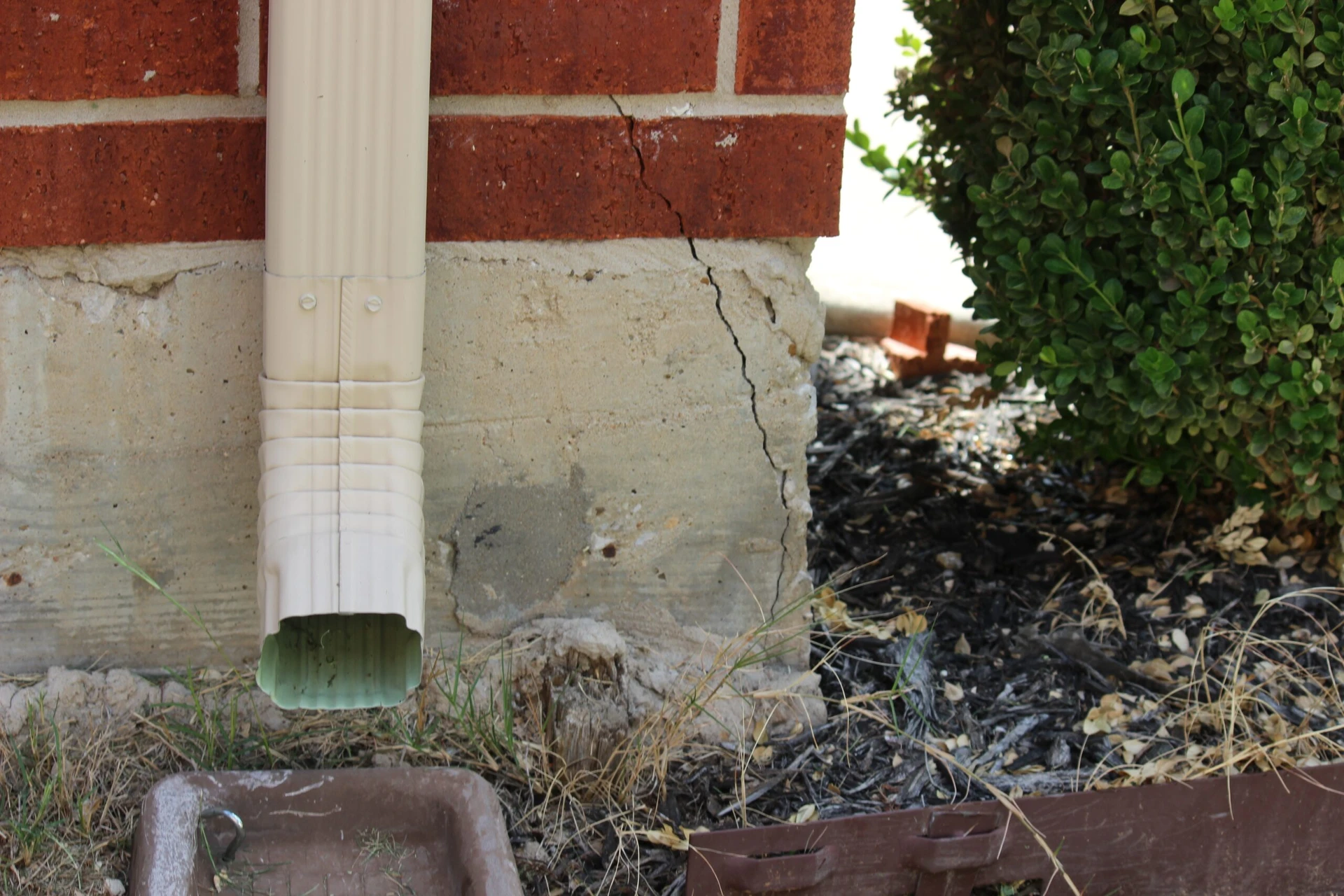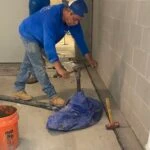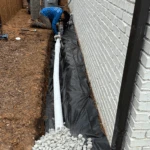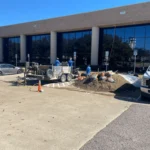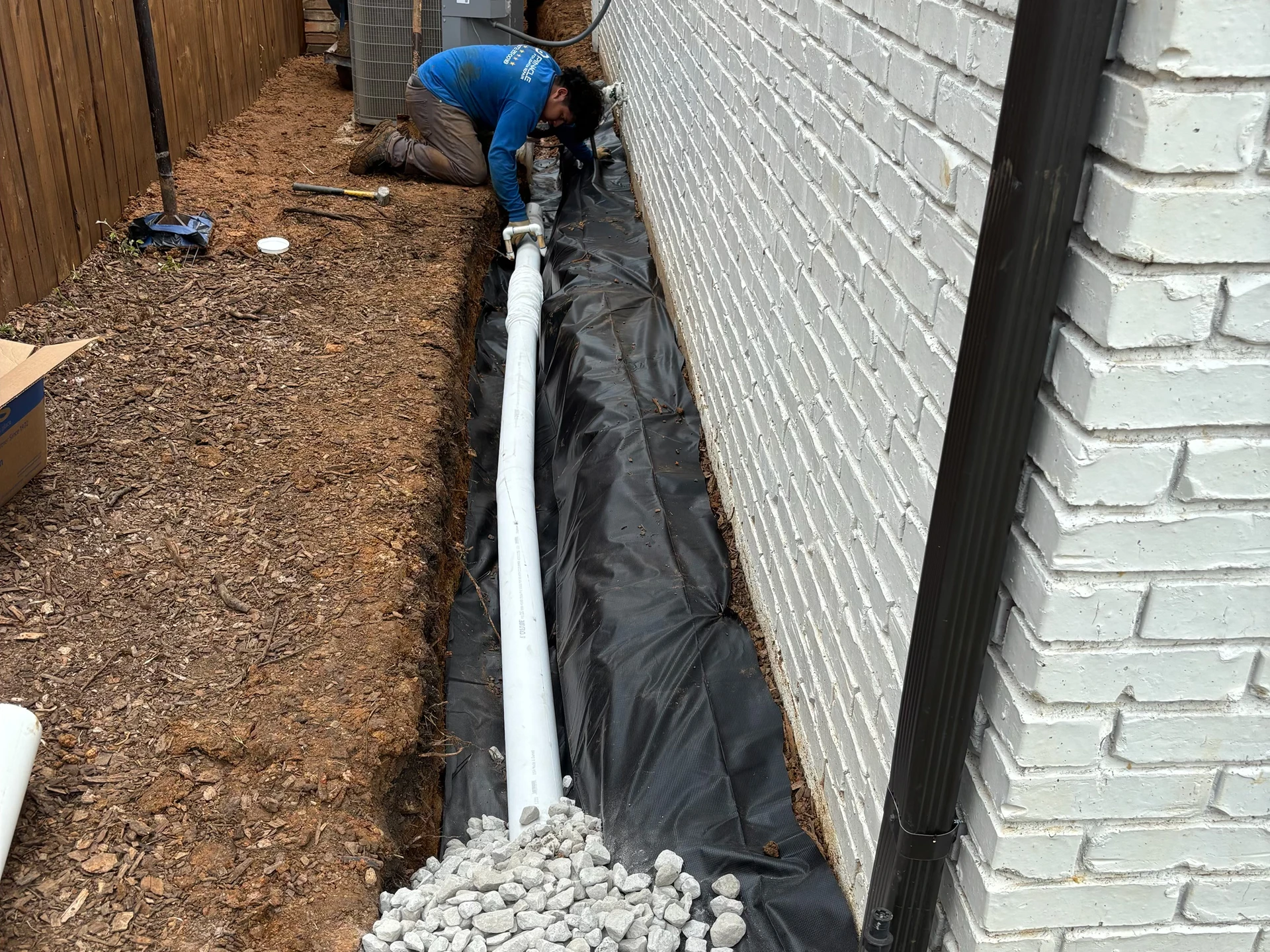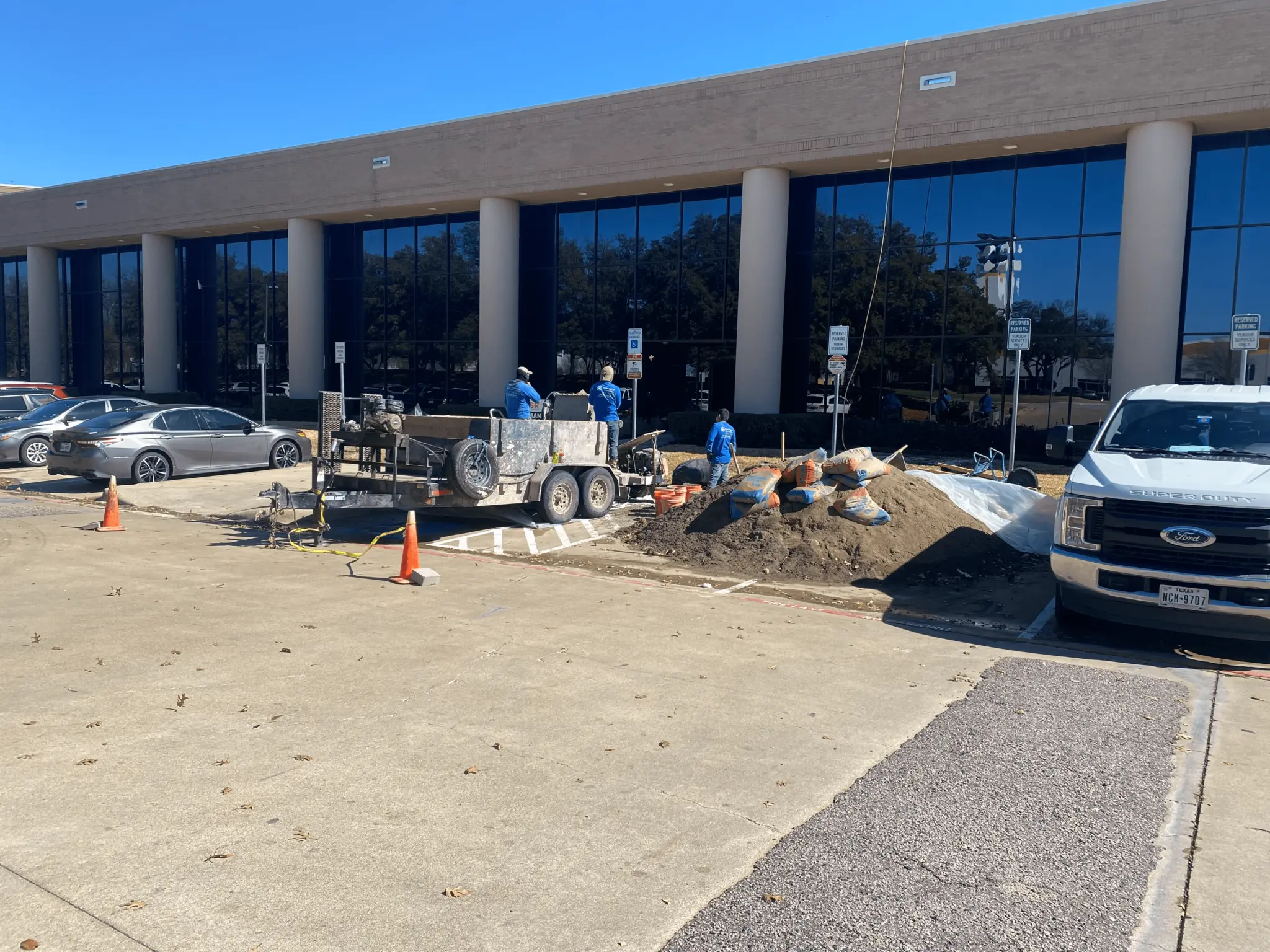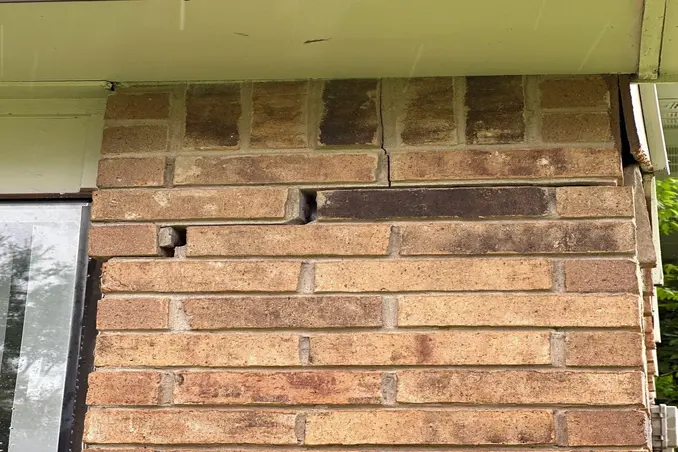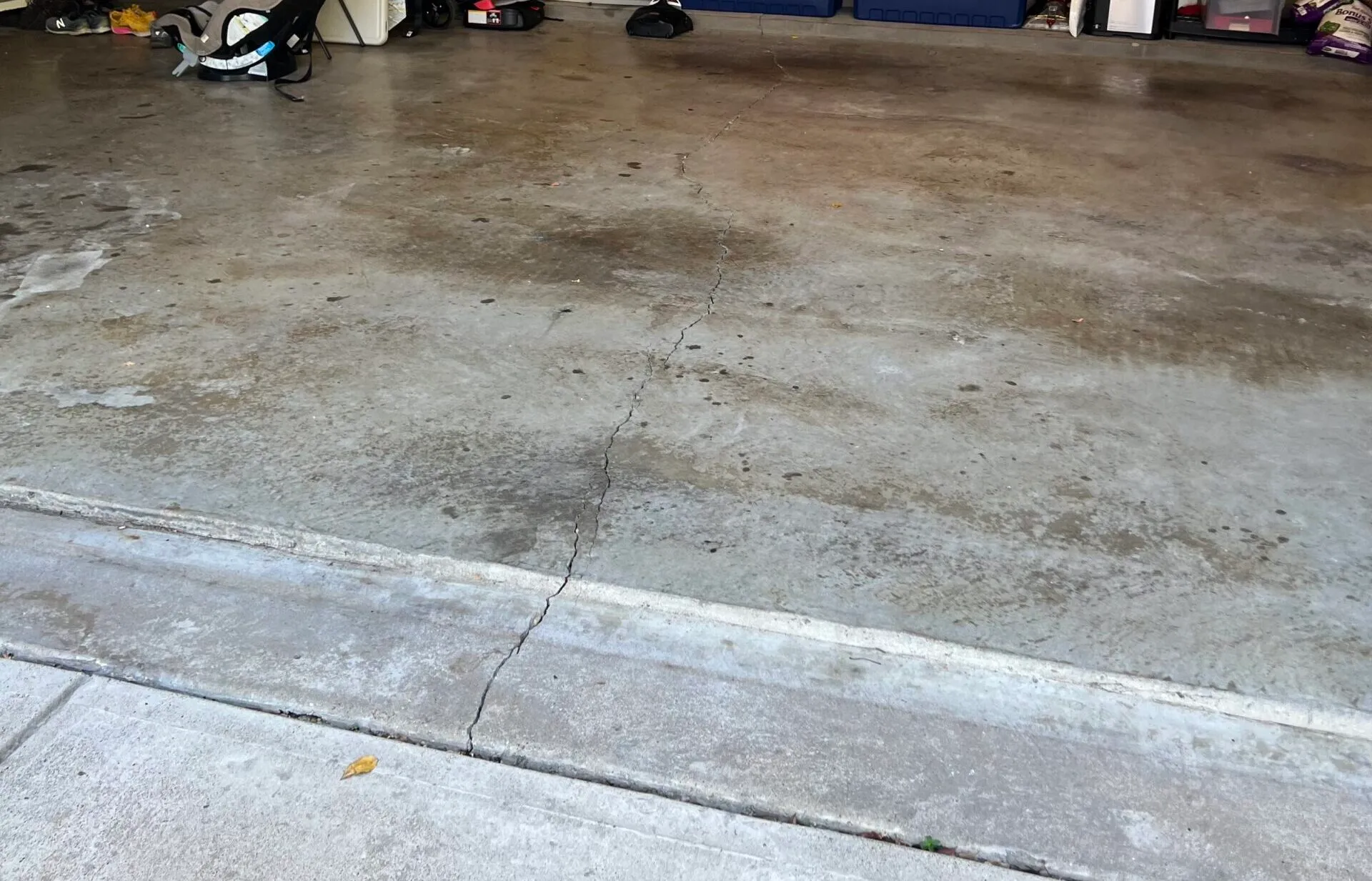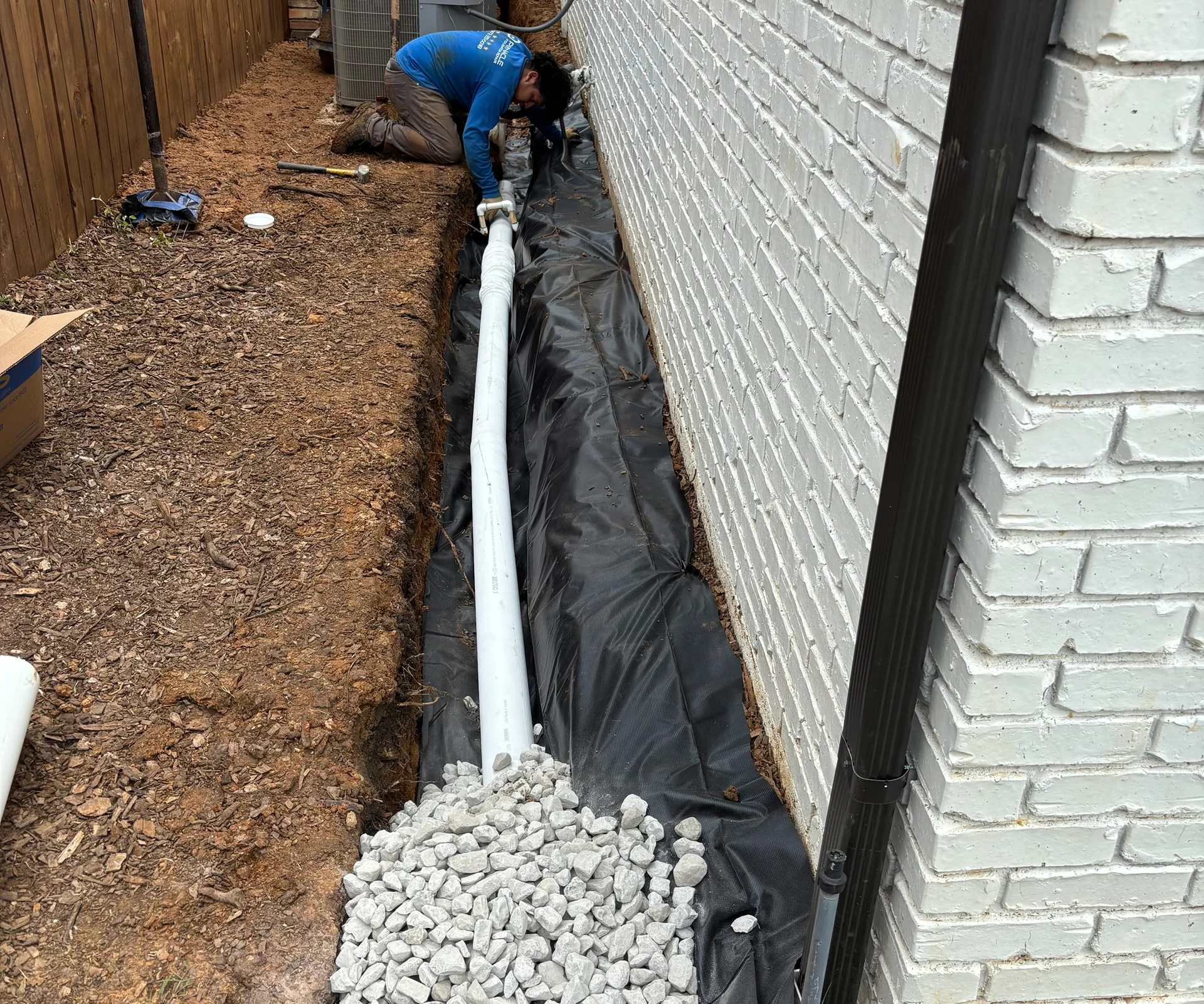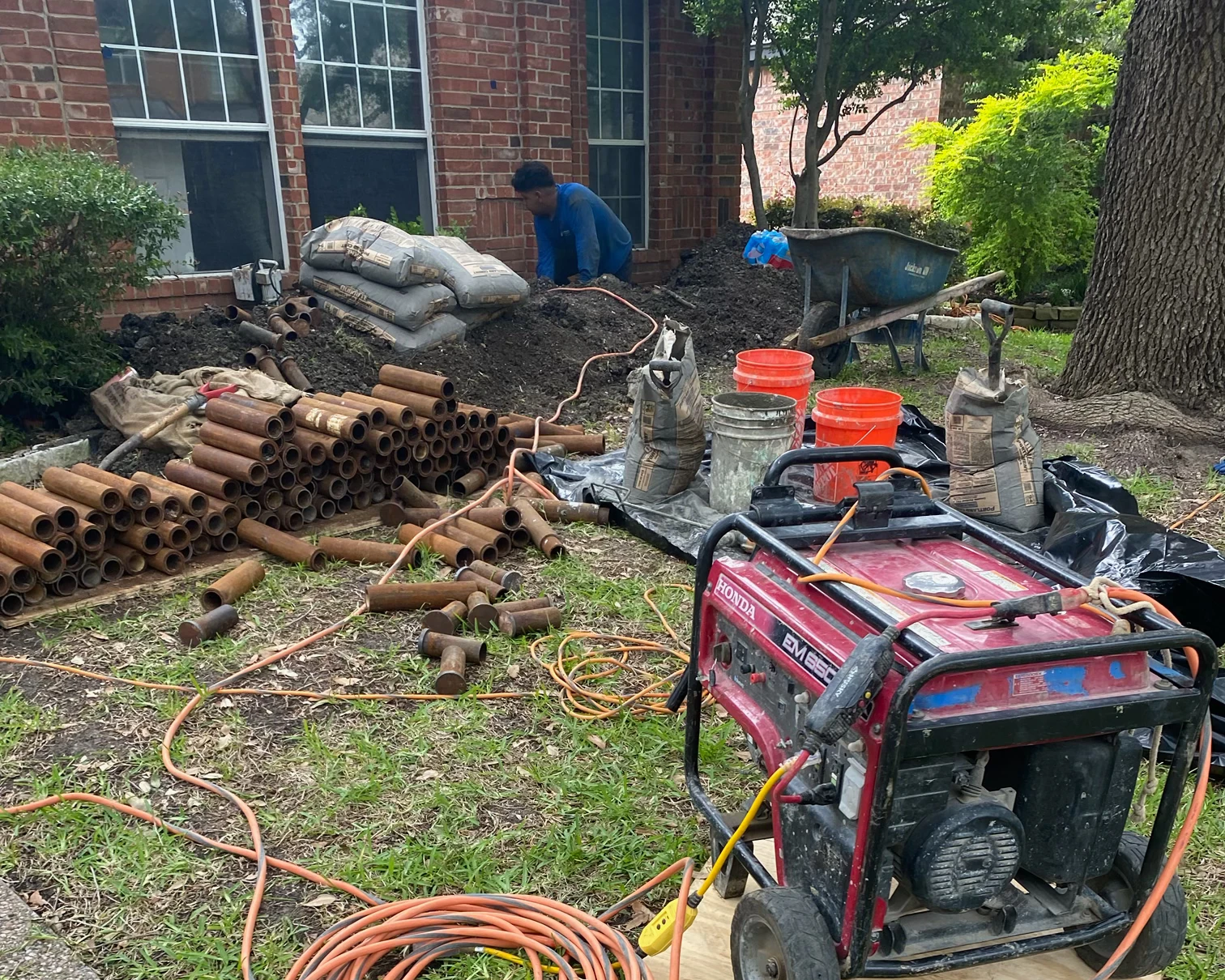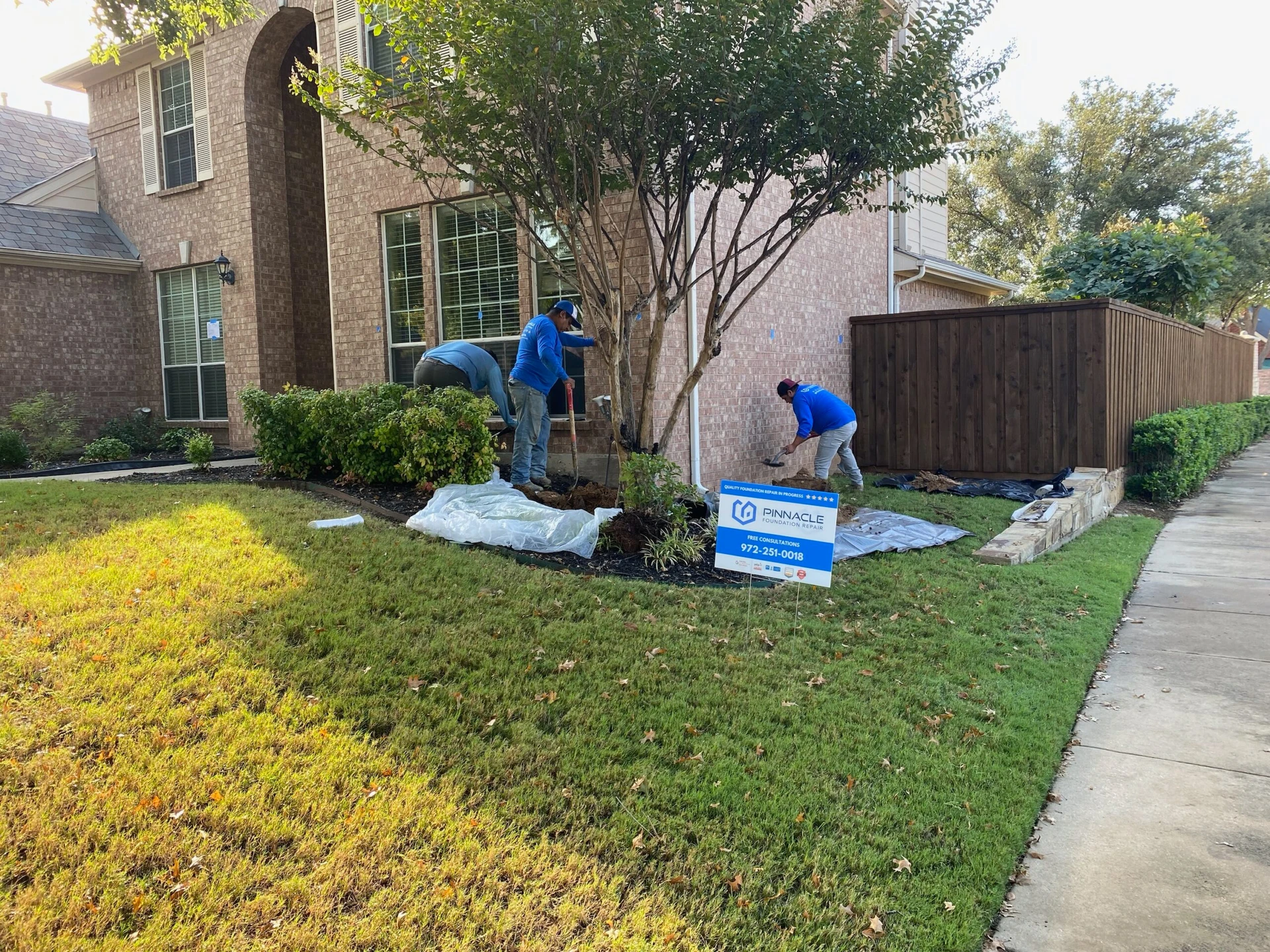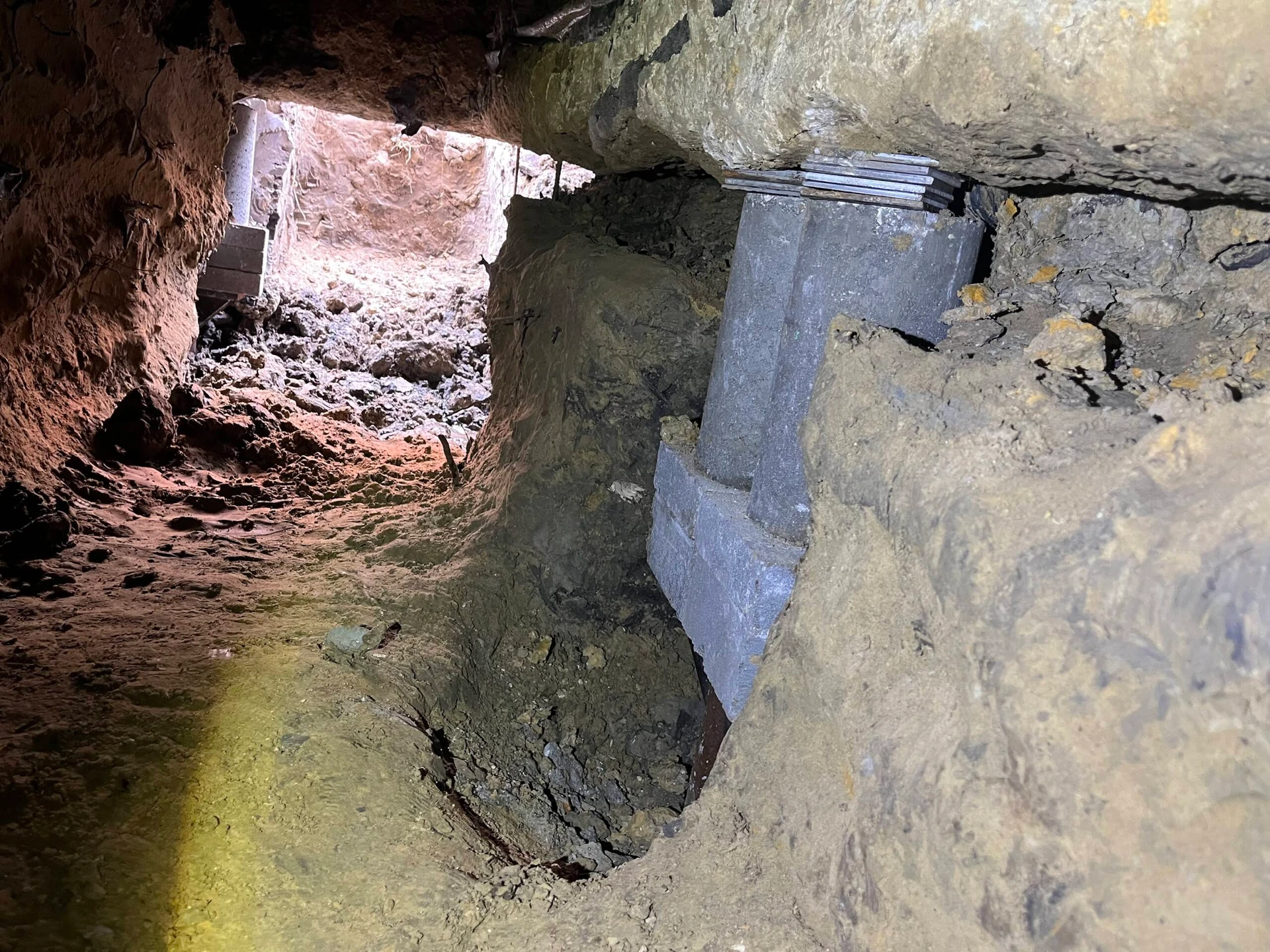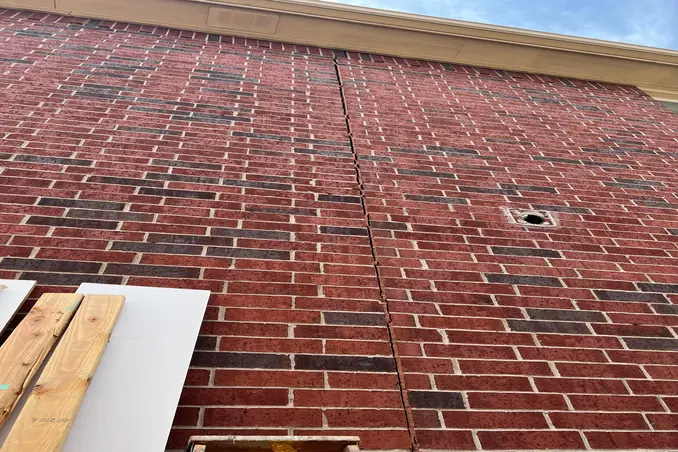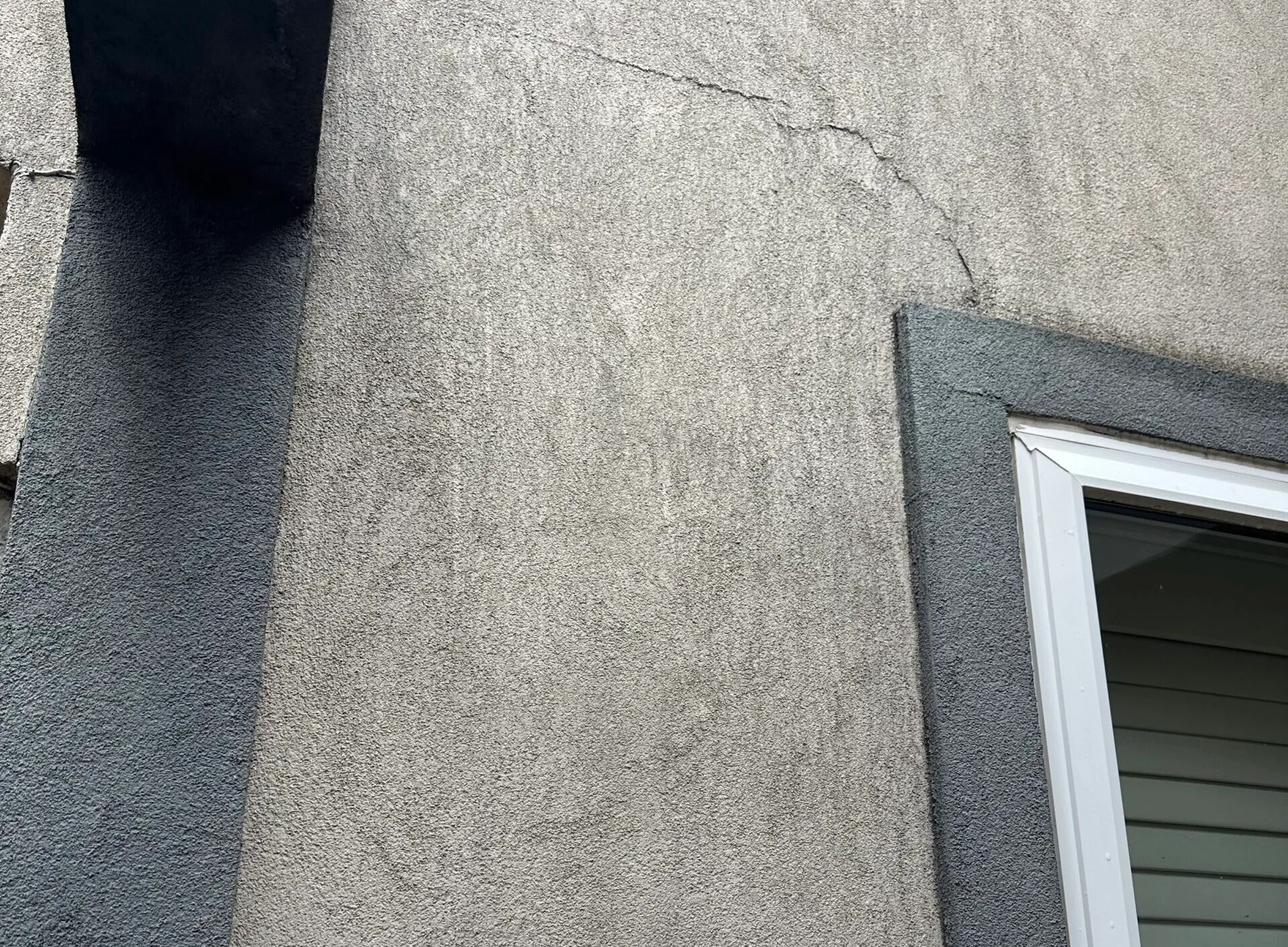Foundation problems are a common headache for Texas homeowners, with nearly a quarter of all houses experiencing some form of foundation distress. One specific issue we see frequently in concrete slab foundation homes are wedge cracks at the corners of foundations. These cracks might seem small at first, but they can sometimes signal bigger problems. Let’s dive into what wedge cracks are, why they happen, and how you can fix and prevent them.
What is a foundation wedge crack?
Foundation corner wedge cracks, also known as “corner pops,” appear at the corners of your foundation due to movements between materials like brick and concrete. They usually look like a triangle or wedge shape, starting narrow at one end and widening out.
These cracks are often caused by uneven pressure on the foundation, and in most cases they aren’t too serious, but sometimes they can indicate other foundation issues that need attention.
Signs of Wedge Cracks
Spotting wedge cracks early can prevent further damage, if you know what to look out for! Check your foundation frequently for:
- Diagonal cracks at the corners of your foundation or brick veneer
- Corner cracks that let in moisture
- A physical breakaway of the foundation’s corner, shaped distinctly like a wedge
Seeing any of these? You might have a wedge crack on your hands. Let’s talk about what causes these “Corner Pops” and how you can deal with them.
Causes of Wedge Cracks
Wedge cracks at the corners of concrete slabs are usually caused by the different ways concrete and brick move. As concrete cures, it shrinks, while brick expands and contracts with temperature changes. This mismatch creates stress at the corners, leading to wedge-shaped cracks.
In Texas, these cracks are often intensified due to:
Soil Conditions: The expansive clay soil in Texas can cause foundation movement, making the problem worse.
Climate: Extreme temperature changes between summer and winter cause materials to expand and contract more, increasing the chances of cracks.
Groundwater Pressure: Changes in groundwater levels can put pressure on the foundation, potentially contributing to wedge crack formation.
While these cracks might look bad, they usually don’t affect the structural integrity of your home. However, it’s a good idea to keep an eye on them and consider sealing them to prevent moisture and pests from getting in.
Impact on Structural Integrity
The good news is, most wedge cracks are generally superficial and do not compromise the structural integrity of your home. A common misconception is that all wedge cracks indicate major foundation problems. In reality, many of these cracks are purely cosmetic and do not necessitate major repairs. Another myth is that every wedge crack requires extensive full foundation repair work, while most can be managed with simple fixes.
However, while they are usually harmless, wedge cracks can provide a pathway for water or insect infiltration, which can lead to more significant issues over time. Wedge cracks can also affect the load-bearing capacity of your foundation if left unchecked. Monitoring these cracks for any indications of water seepage or structural issues is important!
When to Worry About Wedge Cracks
As we’ve covered, most wedge cracks are just an eyesore and typically not dangerous. But there are times when they can potentially signal a bigger problem. Keep an eye out for these red flags:
- Cracks wider than a coin
- Cracks that allow water to seep in
- Uneven floors or sticking doors near the area
- Stair-step cracks in the mortar between foundation blocks
If you notice any of these, it’s time to call a professional from Pinnacle Foundation Repair for a FREE foundation inspection, as there might be more going on than just a wedge crack.
However, if you notice horizontal foundation cracks and bowing walls – this could indicate a far more serious matter. These are signs of significant pressure on your foundation, often from groundwater or soil, and can weaken your home’s structure and lead to major problems. If you see either of these issues, call in a foundation expert ASAP. Remember, catching problems early can save you significant money and stress in the long run.
Repairing Foundation Wedge Cracks
At Pinnacle, we tackle wedge cracks with a variety of solutions, from simple fixes to more complex repairs, depending on the severity of the crack. Thankfully, most wedge cracks don’t require major foundation work.
Sealing the Crack:
Stopping water and pests in their tracks is our first step. We use high-quality materials like epoxy or polyurethane to fill the wedge crack completely, then seal it with a waterproof coating. This straightforward approach not only keeps out moisture but also prevents further damage to your home.
Soil Stabilization:
Sometimes, the problem lies beneath the surface. We can help by replacing or compacting soil around your foundation’s corners. This provides better support and reduces the risk of future wedge cracks from happening.
Comprehensive Repairs:
For stubborn wedge cracks, we have more advanced techniques. This might involve removing damaged concrete and replacing it with a stronger mix, or even adding rebar for extra support. Our goal is to restore your foundation’s strength and prevent the crack from returning.
Preventing Future Wedge Cracks
Preventing wedge cracks is always better than dealing with costly repairs later. Here are some easy tips to keep them from showing up in the first place:
Proper Drainage:
Make sure water flows away from your foundation to avoid soil movement and cracks. Use downspout extensions, keep gutters clean, and grade your soil to direct water away. Installing exterior drainage systems like French drains can also help. They move water away from your foundation through a perforated pipe in a gravel trench, stopping water from pooling around your home. Good drainage is key to keeping your foundation safe!
Using Polyethylene Plastic:
Polyethylene plastic can help reduce stress between concrete and other materials, potentially limiting wedge cracks from appearing. Builders often put a piece of plastic between the first row of bricks and the slab to reduce friction and allow for expansion. Using a vapor barrier can also cut down on moisture problems, keeping your construction durable and long-lasting.
Regular Maintenance:
Regularly checking and maintaining your foundation can help spot potential problems early and avoid major damage. Keep an eye on minor issues before they become big problems, and make sure to clean your gutters often to prevent overflow that could damage your foundation.
Worried about wedge cracks? Contact us!
While wedge cracks are often minor, they can lead to bigger issues if not handled properly. Knowing what to look for and how to fix or prevent these cracks can help keep your home’s foundation in good shape for years to come.
If you’re concerned about wedge cracks or are unsure about the condition of your foundation, don’t hesitate to reach out to us for a free foundation inspection and your peace of mind. Our experts can assess the situation, provide clear explanations, and recommend the best course of action. Let us help protect your home’s investment!

